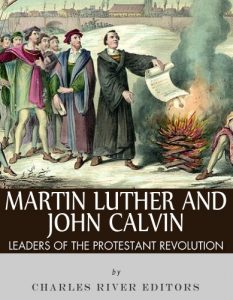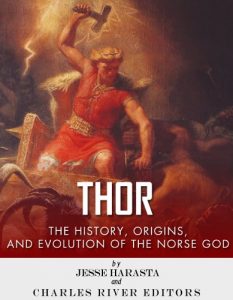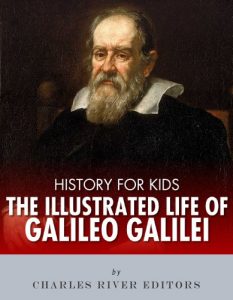*Includes pictures
*Includes contemporary accounts and testimony about the Whitechapel murders
*Includes online resources and a bibliography for further reading
*Includes a table of contents
“I keep on hearing the police have caught me but they wont fix me just yet. I have laughed when they look so clever and talk about being on the right track…How can they catch me now. I love my work and want to start again. You will soon hear of me with my funny little games.” – Excerpt from one of the letters believed to have been written by Jack the Ripper
When one hears the term “Victorian,” many images come to mind. For some, the term conjures up visions of lace and gloves and delicate fans. Others think of tight corsets and even tighter morals. Others, swayed perhaps by one too many British costume dramas, envision gentle elegance and long lost beauty.
Naturally, few people think of multiple dead bodies cast about in the streets or dark bedrooms, most mutilated to a shocking degree, and yet, those tragic images played a significant role not only in late Victorian London but ever since. In 1888 and 1889, a killer stalked the dark backstreets of the city through the notoriously overcrowded and crime-ridden Whitechapel district, murdering young women and then cutting their bodies up like a butcher.
As is so often the case with a serial killer, the first murder was largely ignored. She was a “fallen woman,” a prostitute barely worthy of police notice. But then there was another victim, killed and butchered while plying her illicit trade. The police took notice and, by the time the third body was found, also mutilated and filleted like a fish, the public took notice too. An outcry began to swell from the good people of the city who, though willing to overlook a prostitute dying in the streets of alcohol poisoning or a venereal disease, were disconcerted by idea of a mass murderer. Then came two victims found in one day, and a feeling that, if the killer remained on the loose, there was nothing to stop him from seeking victims anywhere, even in the nice suburban neighborhoods of the rising middle-class. As more victims turned up, terror spread throughout the city, and it even became news across the globe, but then the murders seem to have ended just as quickly as they began.
There have been a countless number of serial killers throughout history, and certainly more prolific ones, but the timing, circumstances, and unsolved nature of the case continue to make Jack the Ripper the most famous serial killer in history. The intense media coverage trained the spotlight on local police, who interviewed thousands and considered hundreds of suspects, and it likely played a role in both the actual murderer and would-be copycats and pranksters sending hundreds of letters to police claiming to be Jack the Ripper. It’s also indisputable that the use of a precise modus operandi, the serial killer being given a nickname, and the taunting letters sent to police all influenced subsequent serial killers and the way they were covered. Whether it’s the Zodiac Killer, the Son of Sam, or the Boston Strangler, the antecedent of all 20th century and 21st century killers remains Jack the Ripper.
The Jack the Ripper case continues to fascinate historians and amateur sleuths so much that people have dubbed themselves Ripperologists, and since nobody knows for sure who the killer was, every aspect of the crimes is up for discussion, down to who the actual victims of the Ripper were and whether there was actually more than one Ripper. In addition to considering so many suspects, the police were only certain that 5 of the victims (the “canonical five”) were killed by Jack the Ripper, but there were at least 11 documented murders over the course of several years, and today those are called the Whitechapel murders.
This book chronicles the crimes of the infamous serial killer and the speculation surrounding which of the crimes he committed.
*Includes contemporary accounts and testimony about the Whitechapel murders
*Includes online resources and a bibliography for further reading
*Includes a table of contents
“I keep on hearing the police have caught me but they wont fix me just yet. I have laughed when they look so clever and talk about being on the right track…How can they catch me now. I love my work and want to start again. You will soon hear of me with my funny little games.” – Excerpt from one of the letters believed to have been written by Jack the Ripper
When one hears the term “Victorian,” many images come to mind. For some, the term conjures up visions of lace and gloves and delicate fans. Others think of tight corsets and even tighter morals. Others, swayed perhaps by one too many British costume dramas, envision gentle elegance and long lost beauty.
Naturally, few people think of multiple dead bodies cast about in the streets or dark bedrooms, most mutilated to a shocking degree, and yet, those tragic images played a significant role not only in late Victorian London but ever since. In 1888 and 1889, a killer stalked the dark backstreets of the city through the notoriously overcrowded and crime-ridden Whitechapel district, murdering young women and then cutting their bodies up like a butcher.
As is so often the case with a serial killer, the first murder was largely ignored. She was a “fallen woman,” a prostitute barely worthy of police notice. But then there was another victim, killed and butchered while plying her illicit trade. The police took notice and, by the time the third body was found, also mutilated and filleted like a fish, the public took notice too. An outcry began to swell from the good people of the city who, though willing to overlook a prostitute dying in the streets of alcohol poisoning or a venereal disease, were disconcerted by idea of a mass murderer. Then came two victims found in one day, and a feeling that, if the killer remained on the loose, there was nothing to stop him from seeking victims anywhere, even in the nice suburban neighborhoods of the rising middle-class. As more victims turned up, terror spread throughout the city, and it even became news across the globe, but then the murders seem to have ended just as quickly as they began.
There have been a countless number of serial killers throughout history, and certainly more prolific ones, but the timing, circumstances, and unsolved nature of the case continue to make Jack the Ripper the most famous serial killer in history. The intense media coverage trained the spotlight on local police, who interviewed thousands and considered hundreds of suspects, and it likely played a role in both the actual murderer and would-be copycats and pranksters sending hundreds of letters to police claiming to be Jack the Ripper. It’s also indisputable that the use of a precise modus operandi, the serial killer being given a nickname, and the taunting letters sent to police all influenced subsequent serial killers and the way they were covered. Whether it’s the Zodiac Killer, the Son of Sam, or the Boston Strangler, the antecedent of all 20th century and 21st century killers remains Jack the Ripper.
The Jack the Ripper case continues to fascinate historians and amateur sleuths so much that people have dubbed themselves Ripperologists, and since nobody knows for sure who the killer was, every aspect of the crimes is up for discussion, down to who the actual victims of the Ripper were and whether there was actually more than one Ripper. In addition to considering so many suspects, the police were only certain that 5 of the victims (the “canonical five”) were killed by Jack the Ripper, but there were at least 11 documented murders over the course of several years, and today those are called the Whitechapel murders.
This book chronicles the crimes of the infamous serial killer and the speculation surrounding which of the crimes he committed.












